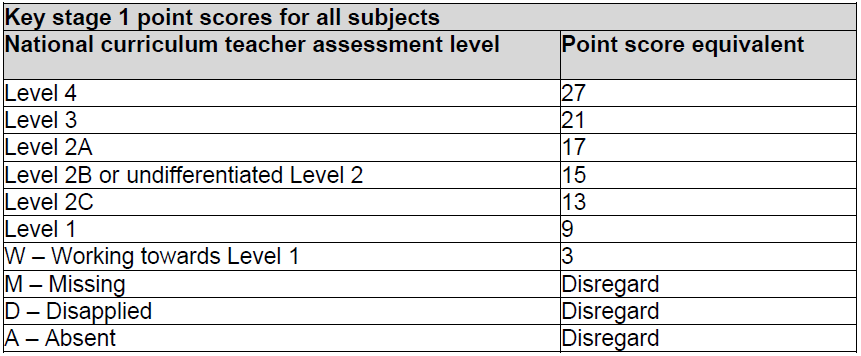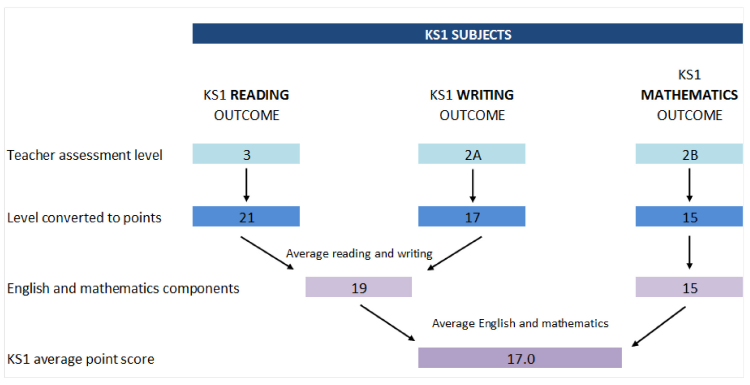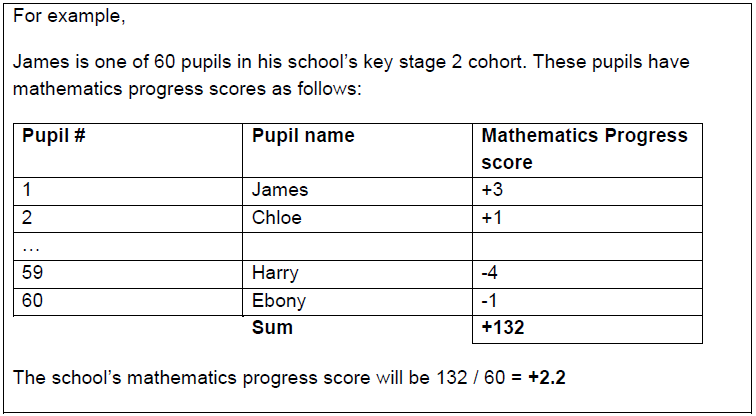Coaching for staff development has become a key concept in many schools. When managed correctly…
KS2 Assessments and Scaled Scores
Those pupils taking the KS2 tests in May 2016 are the first to be assessed against the new national curriculum. The test outcomes and the Teacher Assessments will no longer be reported using levels and APS. Progress will no longer be evaluated by the proportion making expected and more than expected progress.
Attainment – Writing
Writing is to be Teacher Assessed across 4 categories:
- working towards the expected standard;
- working at the expected standard;
- working at greater depth within the expected standard;
- those that do not meet the “working towards” standard.
It is likely that the final category will be sub-divided but this is still not clear.
Attainment in writing at a school and key group level will only be reported on a threshold basis for the above categories.
Attainment – Reading, Maths and GPS
In reading, maths and GPS new tests are to be taken in w/c 9th May. The raw scores and the associated scale scores from these tests will be published on 5th July. At the same time the DfE will publish conversion tables which will explain how the raw scores translate to scale scores.
Although not directly comparable to the old national curriculum levels the DfE have indicated that the national standard (100 scale score) will roughly equate to an old L4B.
It is the DfE’s intention to publish the scale score needed in each subject to achieve the “higher” standard but this will not be available until after the tests in summer 2016.
Attainment in reading, maths and GPS at a school and key group level will reported on a threshold basis in similar categories to writing and also on an average scaled score basis.
Progress – Reading, Writing and Maths
Expected and more than expected progress proportions by subject will no longer be published. The progress from KS1 to KS2 will be evaluated using a very similar Value Added calculation to that used in previous years, an explanation is set out below:
Step 1 – The first step in the calculation process will use the pupil’s individual teacher assessments from KS1 to place pupils into groups with similar start points nationally. The 2016 calculation will be done using the old national curriculum levels. The pupil’s KS1 levels will be converted to points using the old conversion process:
The pupil’s overall APS will be calculated to provide an equal weighting for English and maths. Therefore the average of the KS1 reading and writing APS will be calculated first and then this English APS will be averaged with the maths APS to get the pupil’s overall APS.
Pupils stay in the same prior attainment group based on their overall KS1 APS when the separate reading, writing and maths VA scores are calculated.
Step 2 – A mean average of all of the KS2 scores of the pupils in each prior attainment group will be calculated.
Ks2 scaled scores will be used as the end points for the progress calculation in reading and maths.
In writing pupils will be allocated nominal “scale scores” or points dependent on which Teacher Assessment category they fall into. This is for the sole purpose of the school progress calculation and will not be notified to individual pupils or used to calculate an attainment score at school level in writing.
Step 3 – Individual pupil progress scores will be calculated as the difference between the individual pupil’s scaled/nominal score and the mean average of all the KS2 scores of pupils in the same prior attainment group.
Step 4 – The school’s and key group’s progress scores, for a subject, is the mean average of its pupils’ progress scores in that subject (and group).
Interpreting Progress Scores
School and key group level progress scores will be positive and negative numbers either side of zero.
- A score of 0 means pupils in this school, on average, do about as well at key stage 2 as those with similar prior attainment nationally
- A positive score means pupils in this school on average made more progress than those with similar prior attainment nationally
- A negative score means pupils in this school on average made less progress than those with similar prior attainment nationally. A negative score will not necessarily mean a school is below the floor.
School and key group progress scores need to be interpreted alongside their associated confidence intervals.
If the lower bound of the school’s or group’s confidence interval is greater than zero it means the school or group has achieved greater than average progress compared to pupils with similar starting points nationally.
Similarly, if the upper bound is below zero, then the school or group has made less than average progress.
Where a confidence interval overlaps zero, this means that the school’s or group’s progress score is not significantly different from the national average.
NB – The results of schools with small cohorts tend to have wider confidence intervals. This reflects the fact that performance of a small number of pupils taking key stage 2 tests can have a disproportionate effect on the school’s overall results. Both the progress score and the confidence interval for a school should be taken into account when comparing with other schools or pupil groups.
Confidence intervals will be taken into account when determining whether a school is below the floor standard. Further information is available in annex A.
Publication of Results
RAISEonline and the Performance Tables 2016 will publish the results in the autumn term.
Pupil level scaled and progress scores will also be made available to schools through RAISEonline in the autumn term.
Schools will not be able to fully interpret their results until the autumn as the VA model will not be published before then and the following key pieces of information will also not be available until after the test results are released in summer 2016:
- What scaled/nominal scores are to be allocated to KS2 writing assessments
- What scaled scores in reading, maths and GPS will constitute a “high standard”
- What progress score will constitute “sufficient” progress for floor standard purposes
- What progress score is needed to be above the “coasting” measure
For more details please see source document Primary School Accountability in 2016.
We are offering a full KS2 reporting service as well as training in the use of the data, further details are here.
Other blogs include:
Primary Performance Tables 2016
KS1 Assessments and Scaled Scores




